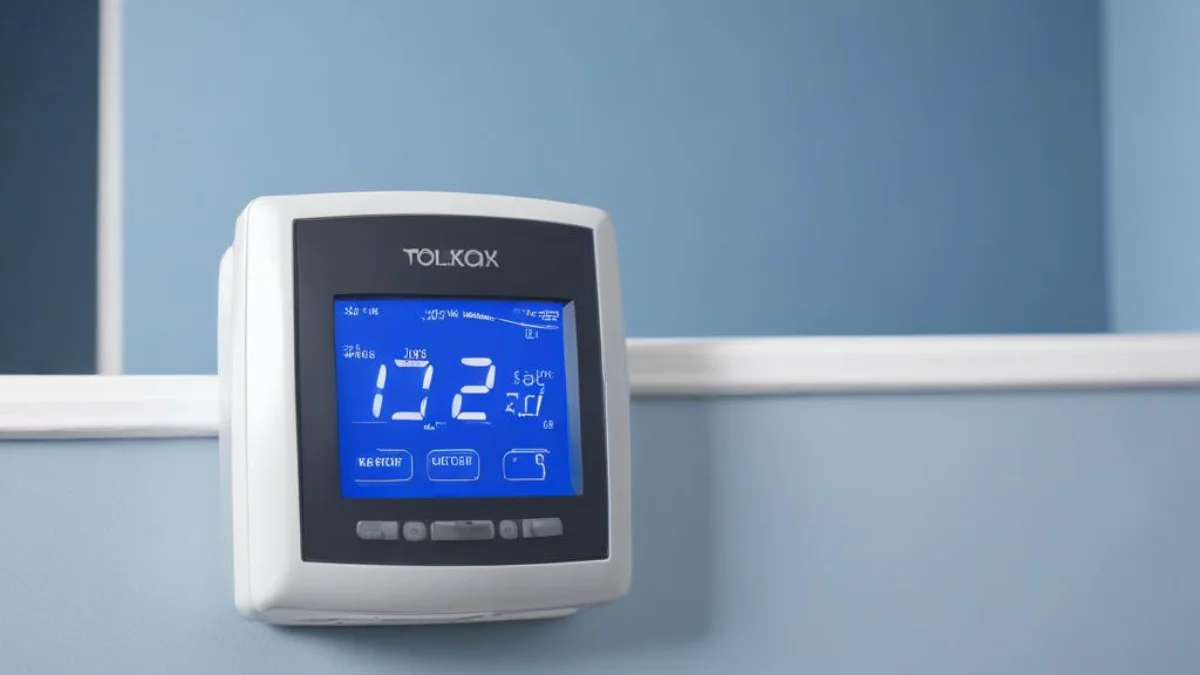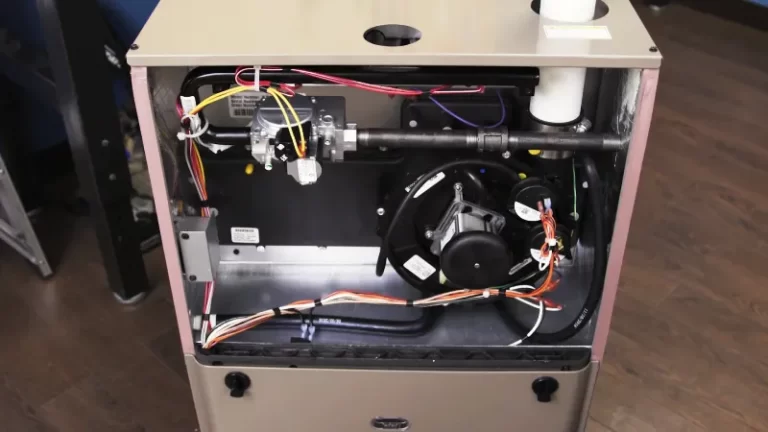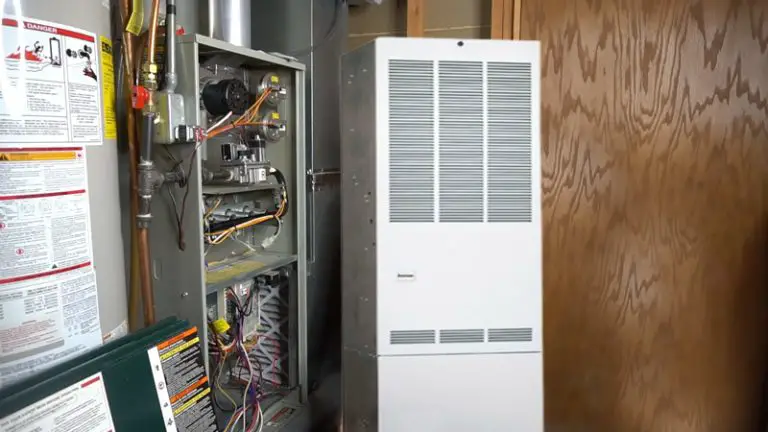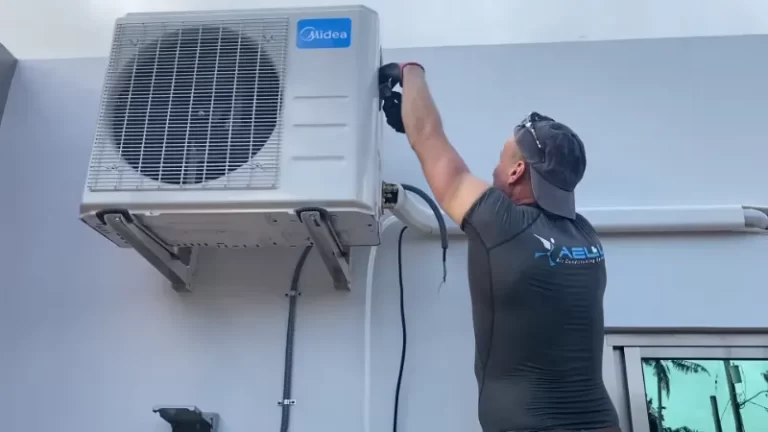Heat Downstairs But Not Upstairs? Your Guide to a Warmer Home
It’s a classic winter frustration. You’re perfectly comfortable in your living room downstairs, but the moment you head up to bed, you enter a noticeably colder zone. If you’re tired of wearing layers just to walk around your own second floor, you’re not alone. This is one of the most common complaints homeowners have about their heating systems.
The good news is that in many cases, the cause is a simple issue you can fix yourself. Uneven heating isn’t just a comfort problem; it’s a sign that your HVAC system is working inefficiently, which can lead to higher energy bills. Let’s dive into the reasons why your heat works downstairs but not upstairs and explore the solutions to bring balanced warmth back to your entire home.
You'll Learn About
Why Your Upstairs is an Icebox: Understanding the Root Causes
Before you can fix the problem, you need to understand why it’s happening. Several factors can contribute to that chilly second story, ranging from simple physics to mechanical issues within your HVAC system.
The Science of Heat: The Stack Effect
Hot air naturally rises, and cold air sinks. During the winter, warm air generated by your furnace rises to the second floor and beyond, eventually escaping through tiny cracks and gaps in your attic and roof. This creates a vacuum effect that pulls cold air into the lower levels of your home through gaps in windows, doors, and the foundation. This natural airflow pattern is known as the “stack effect,” and it’s a primary reason two-story homes struggle with temperature balance.
Thermostat Location and Readings
Your HVAC system’s entire operation is based on the readings from a single device: the thermostat. If your thermostat is located downstairs in a central area, it will shut the furnace off once the downstairs reaches your set temperature. It has no way of knowing that the upstairs is still several degrees colder, leaving that area perpetually chilly.
Furthermore, a thermostat placed near a heat source like a sunny window or a lamp can get a false reading. This can cause it to shut the system off prematurely, preventing enough warm air from ever reaching the far corners of your home, especially the second floor.
Common Culprits: A Checklist for Diagnosing Uneven Heating
Beyond the basics of airflow, specific components of your heating system can be the direct cause of the problem. Here are the most common issues to investigate when you have heat downstairs but not upstairs.
1. Dirty or Clogged Air Filters
This is the number one cause of many HVAC problems, including uneven heating. A clogged filter severely restricts airflow from your furnace. This forces the system to work harder and reduces the amount of warm air that can be pushed through the ductwork, with the upstairs ducts—being the furthest away—suffering the most.
A severely clogged filter can cause your furnace’s heat exchanger to overheat and shut down as a safety precaution. Regularly changing your air filter is the single most important maintenance task you can perform.
2. Blocked or Closed Vents
It might sound obvious, but it’s a frequent oversight. Check every single vent upstairs to ensure they are open and not blocked by furniture, rugs, or curtains. Obstructed vents prevent the warm air from entering the room, creating cold spots and forcing the air to find other, less efficient paths.
Similarly, check your return air vents. These are the larger grilles that pull air back into the system to be heated. If these are blocked, it disrupts the entire circulation of air in your home.
3. Incorrectly Set or Malfunctioning Dampers
Inside your ductwork, there are small valves called dampers that control how much air flows to different parts of your house. Think of them as gates on the highway of your HVAC system. Many systems have dampers to balance airflow between the first and second floors, often with a “summer” and “winter” setting.
If your dampers are set for summer, they might be directing more air downstairs (for AC) and restricting flow upstairs. Finding and adjusting these levers can be a game-changer for balancing your home’s temperature.

4. Leaky or Poorly Designed Ductwork
Your ductwork is the delivery system for warm air. According to ENERGY STAR®, the typical home loses 20-30% of conditioned air due to leaks, holes, and poor connections in the ducts. If you have leaky ducts running through your attic or crawlspace, a significant portion of that precious warm air is escaping before it ever reaches your upstairs rooms.
Signs of leaky ducts include excessive dust in your home, high utility bills, and rooms that never seem to get comfortable. Sealing these leaks is crucial for both comfort and energy efficiency.
5. Inadequate Attic Insulation
As we know, heat rises. If your attic isn’t properly insulated, all that warm air continues its journey right out of your house. Proper insulation acts as a barrier, keeping the heat inside your living spaces where it belongs. If you can see the tops of your ceiling joists in the attic, you almost certainly need more insulation.
Poor insulation can be a major energy drain. Sometimes, the problem is as simple as an unsealed attic access panel; if your attic hatch opens by itself, it could be a sign of significant air pressure differences caused by poor insulation and air sealing.
Your Action Plan: How to Fix Uneven Heating
Now that you know the potential causes, it’s time to take action. Start with the simplest and most cost-effective solutions first before moving on to more complex fixes.
Easy DIY Fixes You Can Tackle This Weekend
- Change Your Air Filter: If it’s been more than a month (or three, for thicker pleated filters), replace it. This is a simple, five-minute job that can have an immediate impact.
- Check All Vents: Walk through your entire house. Open all upstairs supply vents completely and ensure nothing is blocking them. Make sure all return air vents are also clear.
- Adjust Dampers: Locate the main trunk lines of your ductwork in the basement or utility closet. Look for small levers on the ducts. For winter, you want to partially close the dampers on the ducts leading downstairs and fully open the ones leading upstairs. This forces more warm air to the second floor.
- Use Your Fan Setting: Switch your thermostat’s fan setting from “Auto” to “On.” This will circulate the air in your home continuously, even when the furnace isn’t actively heating. This helps to mix the air and even out temperatures between floors.
Intermediate Solutions for the Handy Homeowner
- Seal Air Leaks: Use caulk and weatherstripping to seal leaks around windows and doors, especially on the lower level where cold air is being pulled in.
- Inspect and Seal Ductwork: For exposed ducts in your basement, attic, or crawlspace, you can seal leaks yourself. Use mastic sealant or metallic foil tape (never use standard duct tape, as it will dry out and fail) to cover any holes, gaps, or poor connections you find.
- Boost Attic Insulation: Improving your attic insulation is one of the most effective ways to improve your home’s comfort and efficiency. This can be a DIY project if you’re comfortable working in the attic, or you can hire a professional.
Troubleshooting at a Glance
Use this table to quickly identify your issue and find the right solution.
| Symptom | Likely Cause | Solution |
|---|---|---|
| Weak or no airflow from upstairs vents | Clogged air filter, closed vents, or closed dampers | Replace filter, open all vents, adjust dampers for winter operation |
| Air from upstairs vents is cool or lukewarm | Leaky ductwork in an unheated space (attic/crawlspace) | Inspect and seal ductwork with mastic or foil tape |
| Upstairs is always cold, even when furnace runs a lot | Poor attic insulation or single thermostat downstairs | Add insulation, run fan in “On” mode, consider zoning system |
| Entire system seems to be working harder than usual | Clogged air filter or major duct leaks | Replace filter immediately, have ducts professionally inspected |
When to Call a Professional HVAC Technician
While many causes of uneven heating can be fixed with a little DIY effort, some problems require professional expertise. If you’ve tried the solutions above and your upstairs is still uncomfortably cold, it’s time to call in an expert.
Signs You Need Professional Help
- You suspect major leaks in inaccessible ductwork.
- Your furnace is making strange noises or cycling on and off frequently.
- You’ve done the basic checks and still have very weak airflow.
- Your HVAC system is over 15 years old and struggling to keep up.
A professional can perform a comprehensive inspection, including a blower door test to find air leaks and a duct blaster test to assess duct leakage. They can also determine if your furnace is properly sized for your home.
The Ultimate Solution: HVAC Zoning
For complete control over your home’s comfort, the best solution is an HVAC zoning system. This technology divides your home into two or more “zones” (e.g., upstairs and downstairs), each controlled by its own thermostat. Motorized dampers in the ductwork open and close based on the readings from each thermostat, sending heated air only where it’s needed.
Zoning eliminates the problem of a single thermostat trying to manage a multi-level home. It provides superior comfort and can significantly reduce your energy bills by not overheating unused areas. While it is an investment, it is the most effective long-term solution for homes with persistent temperature imbalances.
Maintaining a Comfortable Home Year-Round
Preventing uneven heating is about consistent maintenance. Scheduling an annual professional tune-up for your furnace ensures all mechanical parts are working correctly. Keep up with filter changes and seasonal damper adjustments.
If you’re exploring different heating options for a new home or a major renovation, it’s worth asking, “should I buy a house with baseboard heating?” as these systems offer room-by-room temperature control by nature. Also, maintaining the utility spaces where your furnace is located is important. Keeping the area clean and organized, perhaps even finding ways to hide utility fixtures like a sump pump discharge pipe, can make routine maintenance easier and safer.
By systematically working through these potential causes and solutions, you can banish the cold spots from your second floor for good. You’ll not only create a more comfortable living space for your family but also improve your home’s energy efficiency and lower your monthly heating bills.



